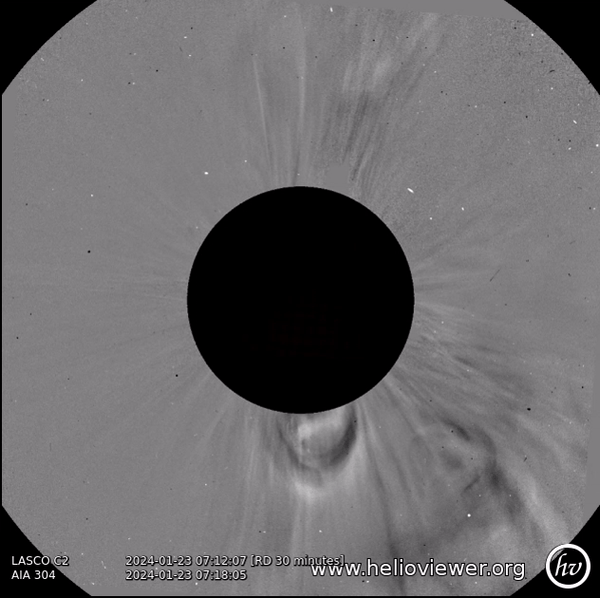Geomagnetic storm update - 24th January 2024
What Has Happened?
The coronal mass ejection (CME) that left the Sun on 20th Jan arrived on the evening of 23rd Jan. The CME did not carry significant southward magnetic field and the disturbance to the solar wind was relatively short lived, so geomagnetic effects were minor.
The Sun has continued at moderately active levels with multiple M-class flares and CMEs in the last few days. A few of the CMEs may give the Earth a glancing blow late on the 25th and on 26th Jan. If these CMEs combine or arrive in quick succession geomagnetic activity could reach STORM levels.
There may be a chance for seeing the aurora on 25th and 26th Jan, if we see arrivals from all the CMEs and particularly if they combine. Those in Scotland, northern England and Northern Ireland have a better chance if the weather is favourable.
Sign-up to receive Geomagnetic Disturbance Alert emails.
Follow us on Twitter:
Follow @BGSauroraAlert for more occasional aurora alerts.
Follow @BGSspaceWeather for daily space weather forecasts.
Glossary
- BGS
- The British Geological Survey is a geoscience research centre that is part of UK Research and Innovation (UKRI) and affiliated to the Natural Environment Research Council (NERC).
- CME or Coronal Mass Ejection
- The eruption of a portion of the outer atmosphere of the Sun into space, caused by rapid changes in its magnetic field. Often occurs along with a solar flare.
- Solar Wind
- The ever-present expansion of the Sun’s hot outer atmosphere into the solar system, which carries space weather within it.
- Filament Eruption
- An eruption of solar plasma (i.e. ions and electrons) associated with the upward movement of solar magnetic field lines into the corona. Filaments are usually dark against the bright solar disk but can appear bright (as 'erupting prominences') on the limbs of the Sun against the darkness of space. Filaments are often associated with CMEs
- Sunspot/Active Region
- A region of intense magnetic field in the Sun's visible outer atmosphere often associated with flares and CMEs.


